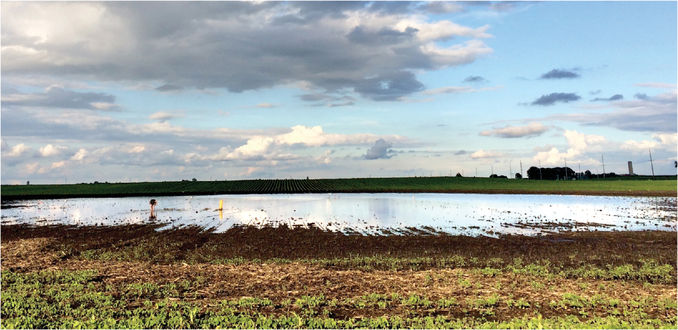Poorly Drained Depressions Can Be Nutrient Hotspots

Agricultural soils with subsurface tile drainage are major sources of nitrogen (N) and phosphorus (P) leaching to surface water. However, even with tile drainage, poorly drained low spots within fields may occasionally pond water during the growing season. Impacts of these topographic depressions on nutrient leaching remain debated. Poor drainage characteristics might promote nutrient retention or removal by physical or biological processes. Alternatively, depressions might have higher nutrient leaching than adjacent better-drained soils due to crop mortality and runoff from upslope areas.
Using buried resin lysimeters, researchers monitored N and P leaching across depressions and adjacent upland soils over multiple years at several sites in north-central Iowa. Depressions had greater N and P leaching than adjacent uplands in most cases. Overall, leaching of both nutrients was about 50% greater in depressions. However, the impact of depressions on nitrate leaching was lower for corn/soybean fields that were managed with a winter rye cover crop as well as those where depressions were planted to miscanthus, a perennial biomass crop.
The findings indicate that poorly drained depressions may contribute disproportionately to nutrient leaching from tile-drained fields and that targeted management of these features could improve water quality.
Adapted from Hall, S.J., Tenesaca, C.G., Lawrence, N.C., Green, D.I.S., Helmers, M.J., Crumpton, W.G., Heaton, E.A., & VanLoocke, A. (2023). Poorly drained depressions can be hotspots of nutrient leaching from agricultural soils. Journal of Environmental Quality. https://doi.org/10.1002/jeq2.20461 (in press)
Text © . The authors. CC BY-NC-ND 4.0. Except where otherwise noted, images are subject to copyright. Any reuse without express permission from the copyright owner is prohibited.











